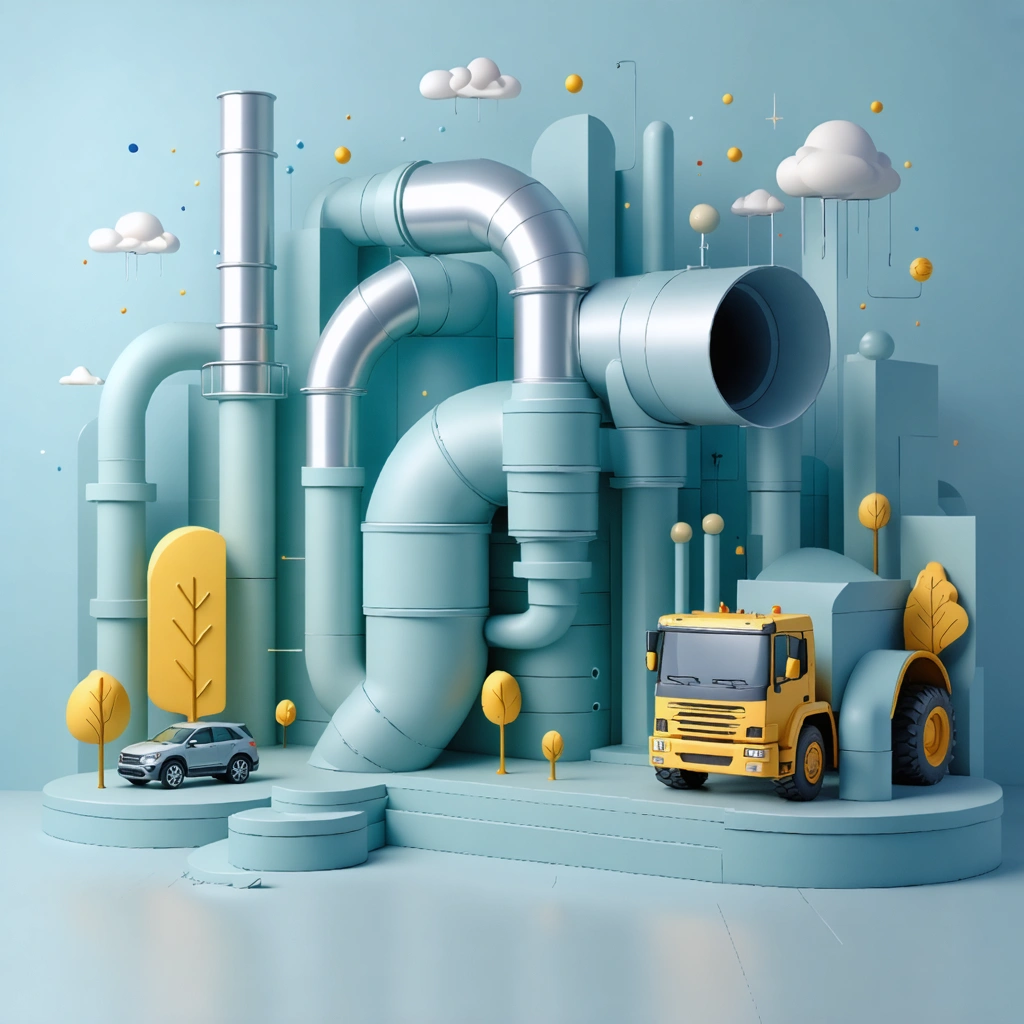
Introduction to Factory Exhaust Designs
In today’s dynamic automotive market, factory exhaust designs have become a focal point for innovation, aesthetics, and performance optimization. As manufacturers strive to deliver vehicles that are not only efficient but also visually striking, the evolution of exhaust systems plays a pivotal role in establishing brand identity and customer appeal. Companies have embraced unique and often bold design choices, turning what was once considered a purely functional component into an essential element of automotive artistry.
Market Trends and Business Implications
Understanding the Design Evolution
The progression from conventional exhaust tips to avant-garde designs represents a broader trend within the automotive industry. Manufacturers are increasingly utilizing advanced materials, streamlined shapes, and cutting-edge visual cues to set their models apart in a saturated market. The focus on exhaust design is part of a larger movement towards performance enhancements that do not sacrifice style.
- Performance Optimization: Modern exhaust systems are engineered to enhance engine performance and reduce backpressure, leading to improved fuel efficiency and horsepower.
- Aesthetic Appeal: Designers integrate sleek, innovative shapes along with polished finishes to reinforce brand identity.
- Environmental Considerations: The evolution in design also includes a commitment to environmental standards, incorporating technologies that reduce emissions while maintaining an attractive exterior.
Business Strategy and Competitive Advantage
From a business perspective, factory exhaust designs are not just about aesthetics. They serve as a strategic tool for market differentiation:
- Brand Positioning: Distinctive exhaust designs contribute significantly to the overall brand narrative, appealing to customers interested in both performance and style.
- Customer Engagement: Unique features can be leveraged in marketing campaigns, drawing attention from automotive enthusiasts and earning accolades in design-specific events.
- Innovation Leadership: Pioneering new shapes and materials boosts reputation as an industry innovator, attracting both customer loyalty and potential partnerships.
Table 1 below provides a comparative overview of the design features typically found in contemporary versus traditional exhaust systems:
| Feature | Traditional Design | Modern Factory Design |
|---|---|---|
| Material | Standard steel or basic alloys | High-grade stainless steel and composite materials |
| Structure | Simple, straight tubes | Curved and multi-directional flows |
| Aesthetic Elements | Basic finishes | Polished, blacked-out, or chrome finishes with intricate designs |
| Environmental Impact | Limited emission reduction technology | Integrated catalysts and emission controls |
Design Inspirations and Notable Examples
Popular Themes in Exhaust Design
Many automotive companies are inspired by concepts ranging from industrial minimalism to futuristic streamlining. These themes not only serve as artistic expressions but also encapsulate the following business benefits:
- Enhanced Market Perception: Vehicles with memorable design elements help in solidifying a premium and performance-focused brand image.
- Customer Retention: Distinctive design cues generate buzz on social media and automotive forums, fostering community engagement around the brand.
- Innovation Benchmarking: Unique designs set new standards in the industry, prompting competitors to elevate their own design practices.
Furthermore, the influence of these design choices can be seen in widely recognized factory exhausts that have become iconic. Below is a numbered list summarizing several standout designs:
- A dual-exhaust system with synchronized twin tailpipes that emphasize symmetry and balance.
- A bold, single-exhaust design featuring a trademark circular cut-out that symbolizes precision engineering.
- Multi-dimensional exhaust tips that combine varied finishes to evoke an interplay between warmth and industrial cool.
- Exhaust systems employing LED lighting to enhance the visual appeal during nighttime driving.
Strategic Future Outlook
Emerging Technologies in Exhaust Systems
Innovative factories are adapting their exhaust designs to meet the rigorous demands of future automotive trends. The integration of technologies such as 3D printing for custom components and the use of lightweight hybrid materials for enhanced durability reflects the industry’s forward-thinking approach. Key trends that are likely to influence future designs include:
- Smart Integration: Incorporating sensors and real-time data analytics to monitor exhaust efficiency and environmental compliance.
- Customization Options: Modular designs allow for customizable exhaust systems, giving consumers the ability to tailor their vehicle’s performance aesthetic.
- Eco-friendly Innovations: Greater emphasis on reducing emissions through advanced catalytic converters and innovative thermal management systems.
Global Market Strategies
Automotive companies are now deploying comprehensive strategies to capture global market share by leveraging unique exhaust designs:
- Strategic Alliances: Collaboration with high-tech material suppliers and design studios to access cutting-edge technologies.
- Market Segmentation: Differentiating product lines based on target markets, from luxury sedans to performance sports cars.
- International Trade: Navigating international standards and regulations to ensure design consistency and compliance across various markets.
Delving deeper, the table below outlines different market segments and the typical design features associated with each:
| Market Segment | Design Priorities | Performance Enhancements |
|---|---|---|
| Luxury Vehicles | Elegant, refined finishes with unique detailing | Optimized for smooth power delivery and sound refinement |
| Performance Sports Cars | Bold, aggressive styling with dynamic shapes | Enhanced exhaust flow and power gains through optimized pipe routing |
| Eco-Friendly Models | Clean designs that emphasize sustainability | Incorporation of emission control technologies and lightweight materials |
| Mass-Market Vehicles | Balanced aesthetics with cost-effective designs | Standardized performance improvements to increase fuel efficiency |
In conclusion, modern factory exhaust designs are much more than simple components; they embody a fusion of aesthetics, performance, and environmental responsibility. By carefully balancing traditional engineering practices with modern design innovations, automotive companies not only enhance vehicle functionality but also establish a strong market presence that resonates with a global audience. The business advantages of these design trends are apparent in improved brand equity, customer loyalty, and competitive positioning in a rapidly evolving market.






